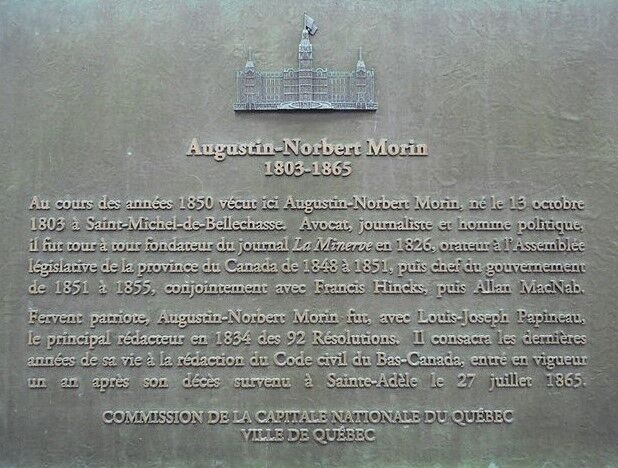Under the Constitutional Act of 1791, a Legislative Assembly was to be established in Upper Canada and Lower Canada. The people of each province (colony) voted for the members who would make up their Legislative Assembly.
Elected members debated and passed laws and budgets to govern the internal affairs of the colony, including:
-
justice
-
education
-
culture
-
agriculture
But the governor had a right of veto, allowing him to reject any bill passed by the Legislative Assembly. This meant that even if the members of the Legislative Assembly supported a bill, the governor could prevent it from being implemented.
To be eligible to vote for a member, a voter had to be at least 21 years old, a British subject and a landowner (in the countryside) or a property owner (in the city). Women had the right to vote as long as they met these requirements and they had this right until it was revoked in 1849.
In the early days of parliamentarianism in Lower Canada, the Legislative Assembly was divided into two groups with opposing interests and ideas. By coming together in parties, members could organize themselves to consolidate their positions in debates. Members would choose one group over the other based on each side’s language and values. There was the British Party, which mainly attracted British people, and the Parti canadien, which mainly consisted of French Canadians. These groups were the colony’s first political parties.
Parliamentarianism is a political system giving elected representatives the power to make laws in parliament.
As its name suggests, the members of this party were mainly Anglophones loyal to the British crown. Described as conservative, this party advocated for traditional values. The men who chose to join the party were mainly from the Anglophone business class. The party’s main objectives included assimilating French Canadians and defending British values (including the monarchy and parliamentarianism).
With parliamentarianism came the creation of political newspapers that supported the ideas of each party. The Quebec Mercury newspaper was founded to represent the interests of Protestant Anglophones who supported the British Party and to reach its supporters.

A copy of the British Party newspaper, The Quebec Mercury.
Source: The Quebec Mercury [Numérisation], January 5, 1805, The Quebec Mercury, BAnQ, (URL).
The Parti canadien opposed the British Party and mainly counted French Canadians from the professional middle class among its members. This party had the firm support of the French-speaking population of Lower Canada because it promoted values that were important to Francophones, including the French language and Catholicism. The members of this party soon realized that the parliamentary structure provided for in the Constitutional Act was not to their benefit. The right of veto of the governor, who supported the British Party, considerably limited the Parti canadien’s ability to pass legislation.
The Legislative Council, whose members were not elected by the people, also had the right to reject or amend bills passed by the Legislative Assembly. This reality compelled the Parti canadien to adopt a more reformist ideology and to call for political changes like responsible government.
Political newspapers such as Le Canadien and La Minerve promoted this party’s ideas.
A responsible government is a government with ministers (the executive branch) chosen from the elected members of the Legislative Assembly. The government must have the Assembly’s trust or it must be replaced. The terms “responsible government” and “ministerial responsibility” mean the same thing.

A copy of the newspaper associated with the Parti canadien: Le Canadien
Source: Le Canadien Nov. 22, 1806 [Digitalization], November 22, 1806, Le Canadien, Wikimedia Commons, (URL). CC0 1.0.

A commemorative plaque in honour of Augustin-Norbert Morin.
Source: Plaque Augustin-Norbert Morin [Photograph], December 27, 2014, Gagnon, J., Wikimedia Commons, (URL). CC BY-SA 3.0
Gagnon, J. (December 27, 2014). Plaque Augustin-Norbert Morin [Photograph]. Wikimedia Commons. https://commons.wikimedia.org/wiki/File:Plaque_Augustin-Norbert_Morin.jpg
Le Canadien. (November 22, 1806). Le Canadien Nov. 22, 1806 [Digitalization]. Wikimedia Commons. https://commons.wikimedia.org/wiki/File:Le_Canadien_Nov_22,_1806.jpg
The Quebec Mercury. (January 5, 1805). The Quebec Mercury [Digitalization]. BAnQ. https://numerique.banq.qc.ca/patrimoine/details/52327/3660515